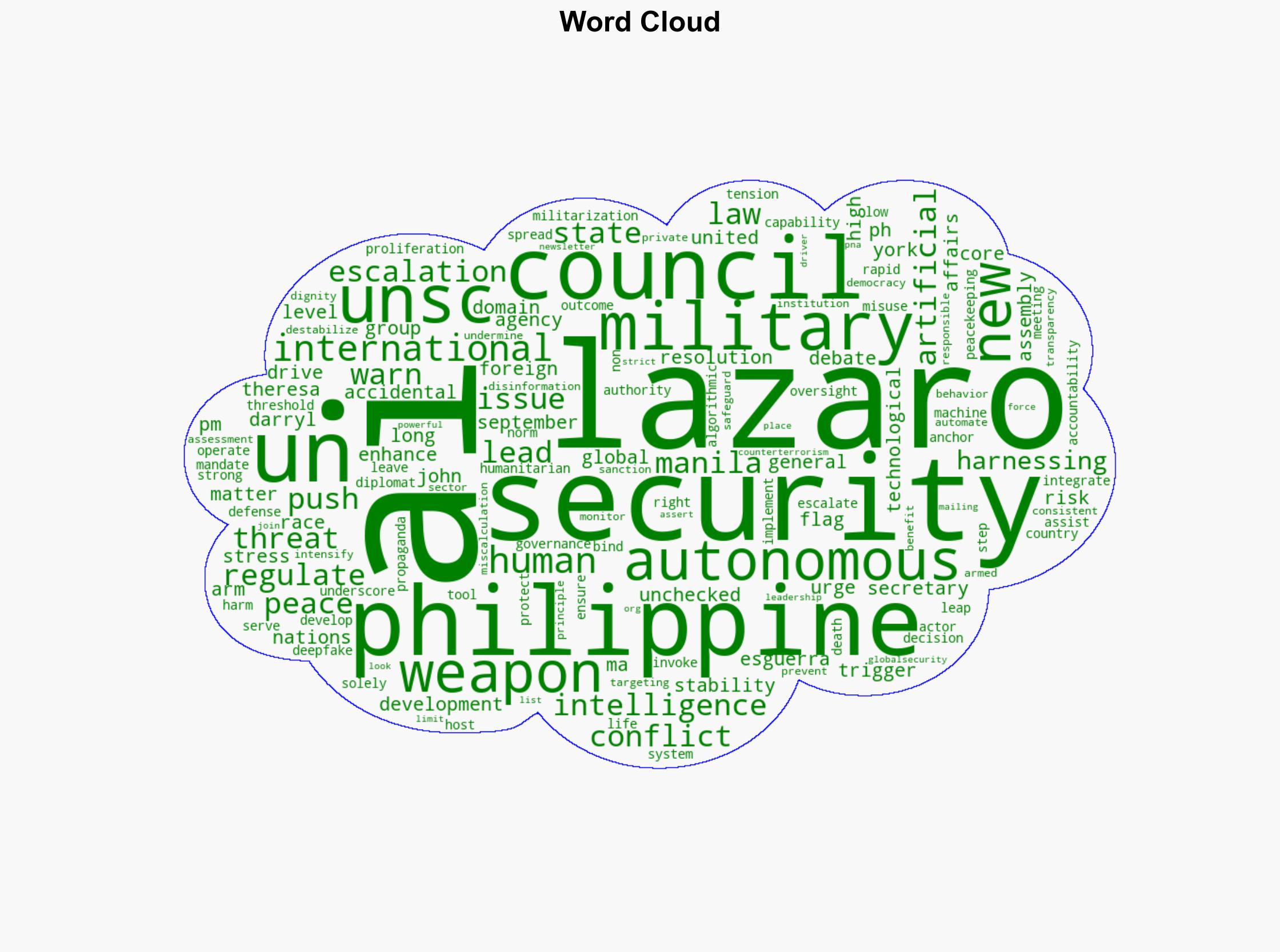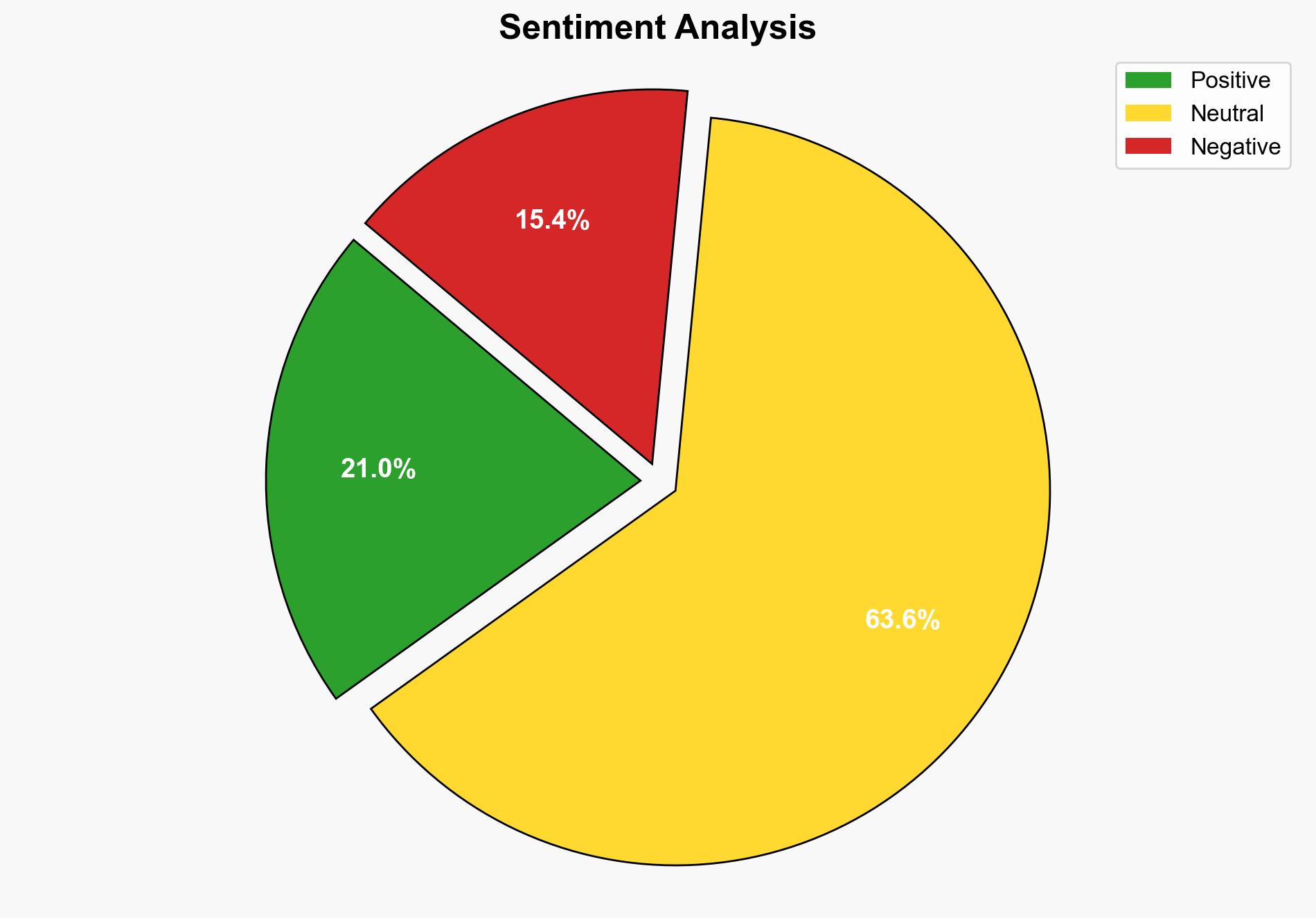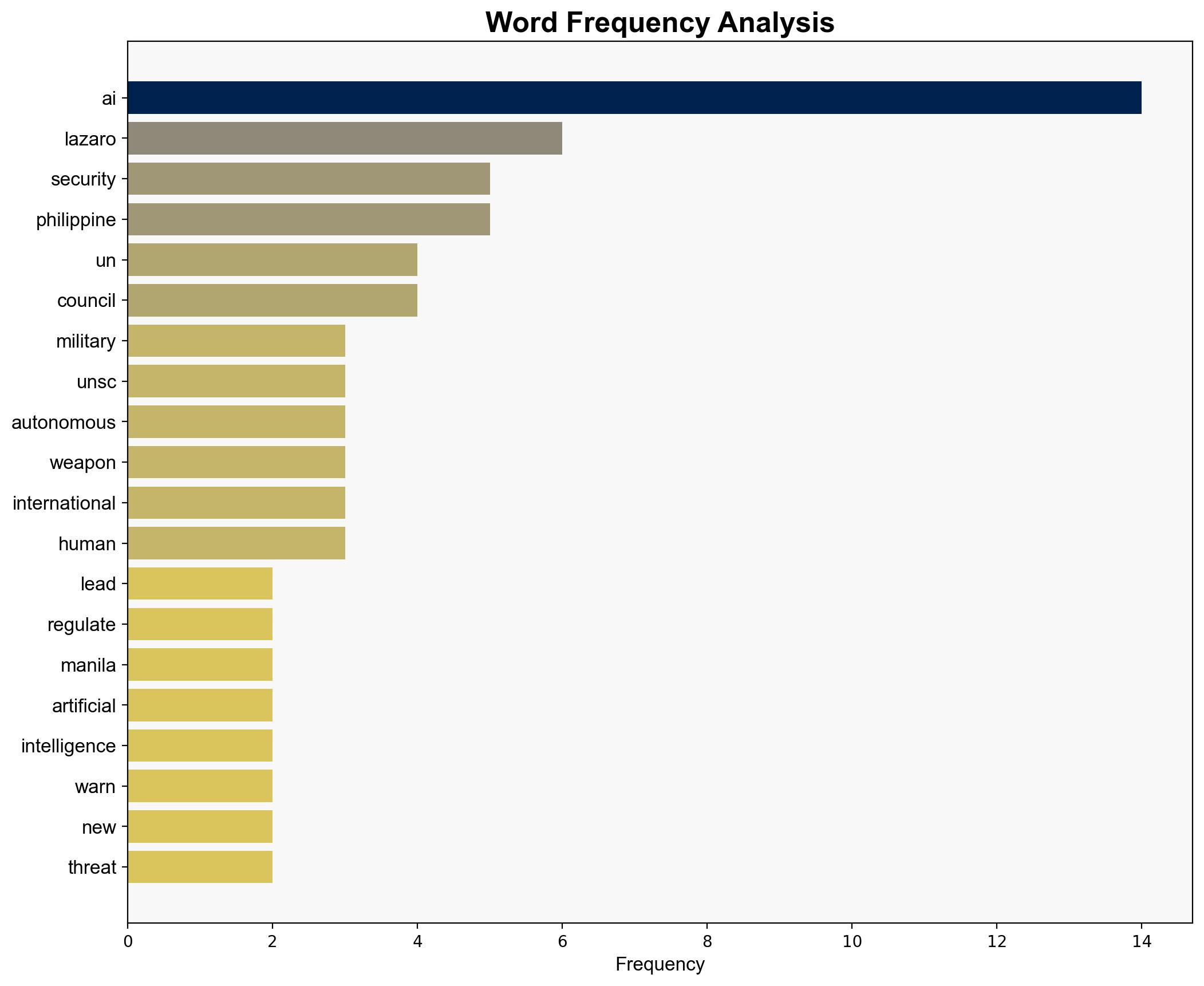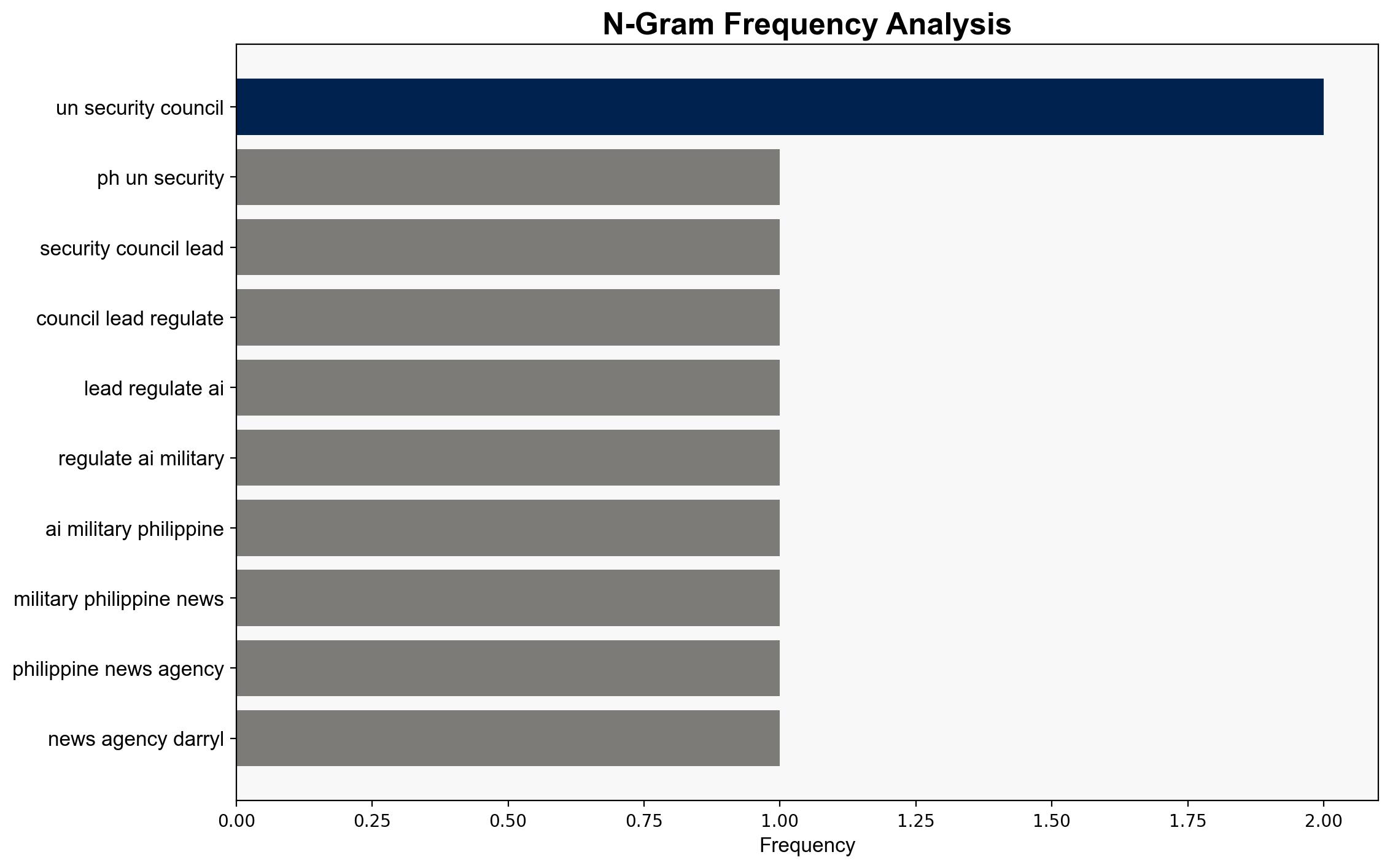PH to UN Security Council Take lead in regulating AI’s military use – Globalsecurity.org
Published on: 2025-09-29
Intelligence Report: PH to UN Security Council Take lead in regulating AI’s military use – Globalsecurity.org
1. BLUF (Bottom Line Up Front)
The most supported hypothesis is that the Philippines’ call for the UN Security Council to regulate AI in military applications aims to preemptively address potential global security threats. This initiative seeks to establish international norms and prevent the misuse of AI technologies. Confidence in this hypothesis is moderate due to the complexity and rapid evolution of AI technologies. Recommended action includes supporting international dialogue on AI regulation and encouraging transparency and accountability in AI development.
2. Competing Hypotheses
1. **Hypothesis A**: The Philippines is genuinely concerned about the unchecked development of AI in military applications and seeks to establish international norms to prevent global security threats.
2. **Hypothesis B**: The Philippines is using the AI regulation agenda to enhance its diplomatic standing and influence within the UN, rather than addressing immediate security concerns.
Using structured analytic techniques such as ACH 2.0, Hypothesis A is better supported. The emphasis on international peace, stability, and the risks of AI-driven arms races aligns with global security concerns. Hypothesis B lacks direct evidence but remains plausible as a secondary motive.
3. Key Assumptions and Red Flags
– **Assumptions**: It is assumed that AI development in military applications is advancing rapidly and poses significant risks without regulation. It is also assumed that the UN Security Council has the capacity to effectively regulate such technologies.
– **Red Flags**: There is a lack of specific examples or data on current AI military applications that pose immediate threats. The rapid pace of AI development may outstrip regulatory efforts.
– **Blind Spots**: Potential resistance from major military powers who may view regulation as a limitation on their strategic capabilities.
4. Implications and Strategic Risks
The push for AI regulation in military use could lead to increased international cooperation or, conversely, exacerbate tensions if perceived as an attempt to curb technological advancements. The risk of an AI arms race remains significant, with potential economic and geopolitical ramifications. The integration of AI in military systems without oversight could lead to accidental escalations or conflicts.
5. Recommendations and Outlook
- Encourage multilateral discussions on AI regulation to build consensus and establish international norms.
- Promote transparency in AI development and deployment to mitigate risks of misuse.
- Scenario Projections:
- **Best Case**: Successful international agreement on AI regulation, enhancing global security.
- **Worst Case**: Failure to regulate leads to an AI arms race and increased global tensions.
- **Most Likely**: Gradual progress towards regulation with ongoing challenges from major military powers.
6. Key Individuals and Entities
– Ma. Theresa Lazaro
– Philippine News Agency
– United Nations Security Council
7. Thematic Tags
national security threats, cybersecurity, counter-terrorism, regional focus




